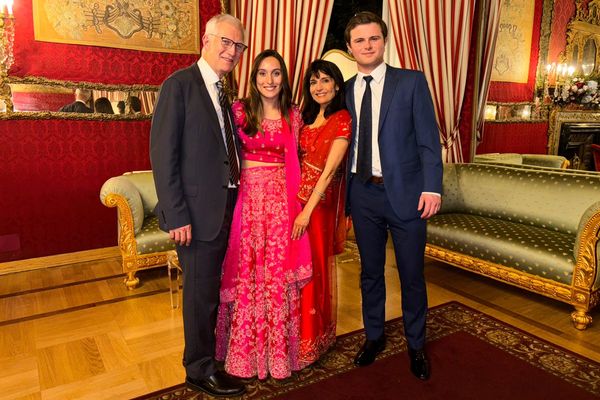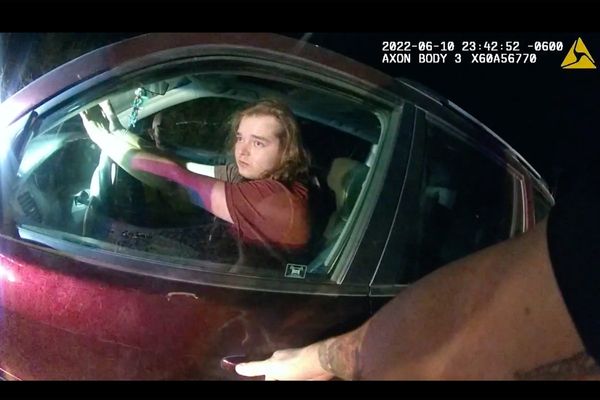Mention the growing global popularity of electric vehicles, and most people think of cars from Tesla Inc., the world’s leading EV maker. But Elon Musk has some unlikely competition approaching in his rearview mirror. The bestseller in emerging clean-car markets Brazil, Israel and Thailand, for instance, isn’t a Tesla. Those bragging rights belong to BYD Co., the Chinese EV and plug-in hybrid maker whose wheels are increasingly plying streets from Sydney to Delhi and even Montevideo, Uruguay.
The Shenzhen-based company has been on a tear in China, dethroning Volkswagen AG as the nation’s biggest-selling car brand during this year’s first quarter—a remarkable disruption of Volkswagen’s dominance there since at least 2008, when data from the China Automotive Technology and Research Center became available. One reason for the turnabout: In that quarter, BYD accounted for 39% of the sales of new-energy vehicles (electrics or hybrids)—or 12% of all passenger-car sales—in China, the world’s largest auto market, based on data from the China Passenger Car Association.
BYD continues to expand internationally at a blistering pace. Although the US remains off-limits for political reasons, the Chinese company recently entered Mexico, Spain and the UK. This month it plans to try its luck in Italy, kicking off with a launch party in Turin, the birthplace of Fiat. After first exporting new-energy vehicles to Norway in 2021, the company is now selling such cars from Singapore to Sweden—a real feat for a Chinese consumer brand.
“By any standard, BYD has come from nowhere to be one of the major car companies in the world,” says former Tesla director Steve Westly, now the managing partner of Westly Group, an early-stage energy and mobility investor. “Some would say they’ve out-Tesla’d Tesla.”
Run by founder and Chairman Wang Chuanfu, BYD, which stands for “Build Your Dreams,” is a tangible example of President Xi Jinping’s own Chinese dream: to restore national greatness, including a return to the center of world economic affairs. With its cars now sold in 53 countries and regions around the world, BYD is the biggest automaker most people have never heard of.
The company’s popularity with drivers at home and abroad stems from having a wide range of good-looking, well-functioning cars at the right price. Its latest electric hatchback, the Seagull—part of the company’s Ocean series, which includes the subcompact Dolphin—starts at just $10,400. Its 55-kilowatt motor and 30-kilowatt-hour battery provide around 300 kilometers (190 miles) on a charge, with a top speed of 80 mph.
Further along its EV model spectrum is the Han, named after the first Golden Age of Imperial China and part of BYD’s Dynasty range; it starts at about $32,800. At the ultrahigh end is the recently released Yangwang U8 SUV, with a presale price of about $154,000.
One of BYD’s biggest selling points—affordability—comes from the company’s vertical integration strategy. Management figures that making more components in-house leads to greater cost control and cheaper vehicles. Unlike many other automakers, BYD manufactures its own batteries (it’s now the world’s No. 2 cell maker) and its own semiconductors, which largely shields it from the supply chain snarls that tripped up other manufacturers during the Covid-19 pandemic.
At BYD’s sprawling headquarters on the outskirts of Shenzhen, tens of thousands of employees work in dozens of office buildings and factories, using a sky rail built by the company to get around. Dormitories for workers line the perimeter, and a large on-site museum commemorates hundreds of BYD’s engineers and financial achievements. One wall shows a chart of the company’s hockey-stick-like revenue growth, from almost nothing in 1995 to 424 billion yuan ($60 billion) in 2022.
BYD sold 1.86 million new-energy vehicles last year, more than in the previous four years combined. Its global workforce doubled, to 570,060, about 200,000 more than the roster at the world’s No. 1 automaker, Toyota Motor Corp. Last year also marked an international sales push for BYD, which only started passenger EV exports in 2021.
For all of BYD’s overseas expansion, it still derives more than three-quarters of its revenue from China, where auto sales growth has been slowing. In contrast, Tesla generated just under half its revenue in the US, while Toyota generated a quarter of its revenue in Japan.
This year, BYD aims to sell as many as 3.7 million fully electric and plug-in hybrid cars. By comparison, Tesla has said it may produce as many as 2 million EVs in 2023. But BYD has been gaining ground against Musk’s operation on an EV-only basis.
BYD, which is backed by Warren Buffett’s Berkshire Hathaway Inc., has become the leading clean-car maker in Brazil, Colombia, Israel and Thailand. In those countries it outpaced BMW AG and Renault SA as well as fellow Chinese automakers Zhejiang Geely Holding Group Co. and Hozon New Energy Automobile Co. in the first quarter, according to data compiled by BloombergNEF. In Australia, India and New Zealand it’s among the top five clean-car manufacturers.
Michael Barnden, a retired teacher living in Adelaide, Australia, made the switch in November to a BYD Atto 3, a five-seat family-friendly electric SUV. The 74-year-old is no stranger to cleaner cars, having bought a Hyundai Ioniq plug-in hybrid about four years ago. When he read the features of the Atto 3, including heated seats and a 480km driving range, he snapped one up. “It feels so welcoming to drive,” he says. “I actually look for excuses to get in the car.”
In New Zealand, the Atto 3 was named the Motoring Writers’ Guild’s Car of the Year in 2022. This was the first time a Chinese brand won, according to guild President Richard Bosselman. BYD’s car beat 11 finalists, including Tesla’s Model Y, Kia’s EV6 and the Polestar 2.
“BYD was probably the last to release into the market, but it made quite a strong, immediate impact,” Bosselman says.
Half a world away, in Uruguay, BYD electric cars have won over customers like Facundo Fernandez, a taxi driver in Montevideo. He decided to buy his first BYD, a gasoline-powered compact F3, because it was cheaper than Western brands. The 35-year-old purchased the BYD e6 in 2017, with a 50% discount on the license plate fee for electric taxis playing a big role in his decision.
“Gasoline is very expensive in Uruguay,” Fernandez says. Whereas a battery charge costs about 500 pesos ($13) and gets you about 400 kilometers, a full tank of fuel goes for 2,500 to 3,000 pesos.
Fernandez says he’ll probably get a larger BYD model next year that’s more comfortable for passengers. “Chinese brands are able to compete because they offer the same features but are a little bit cheaper,” he says.
BYD’s international ascent is missing one important market. Although it sells electric buses in the US, the company has no plans to enter the passenger-car market, where President Joe Biden’s Inflation Reduction Act doles out tax credits of as much as $7,500 toward consumer purchases of EVs—but only if they’re manufactured in North America. Stella Li, executive vice president and head of BYD’s North American operations, says the company doesn’t need to go into every market, just ones it feels are ready for its offerings.
BYD is increasingly courted by governments from Europe to Southeast Asia. The company is in talks with authorities regarding potential construction of a factory in France, newspaper Les Echos reported in May, citing an unidentified person affiliated with a French ministry. A Vietnamese government website also last month said BYD plans to produce EVs in that country, citing talks in Hanoi between Deputy Premier Tran Hong Ha and Wang, BYD’s billionaire founder.
BYD is already building its first overseas production facility in Thailand and has been considering production in the Philippines and Indonesia. In Brazil, Ford Motor Co. is in negotiations to sell one of its plants in Bahia state to BYD.
“What they’ve done in a short period of time is nothing less than stunning,” says former Tesla director Westly.
--With assistance from Yvonne Yue Li, Ken Parks, Craig Trudell and Chunying Zhang.
©2023 Bloomberg L.P.







